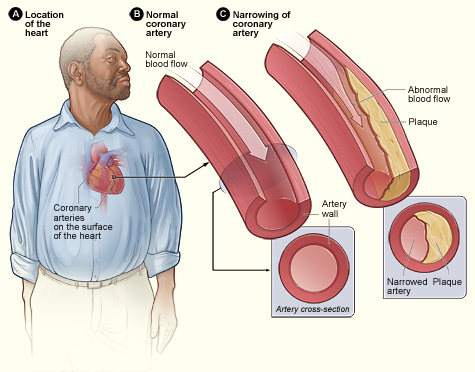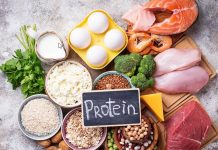The “good” and “bad” often associated to cholesterol actually refer to the lipoprotein that carries cholesterol through the bloodstream. Two types of lipoproteins affect your risk of heart disease. Low-density lipoproteins (LDLs) are commonly referred to as “bad cholesterol” because they carry most of the cholesterol in the blood, and they are the primary source of the plaque buildup that can cause blockage in the arteries. The higher your LDL count, the greater your risk of disease.
High-density lipoproteins (HDLs) are known as “good cholesterol” because they work as the clean-up crew – carrying excess cholesterol from the arterial walls to the liver, where it can begin its journey out of the body. A higher HDL count usually translates to a lower risk of heart disease because HDLs help remove some excess cholesterol before it can do serious damage. Several factors influence these lipoproteins, which in turn help determine your overall blood (or total) cholesterol.
Diet can play a large role in your cholesterol level. Two nutrients can cause cholesterol to increase. The biggest effect comes from saturated fats found in animal sources such as beef, whole dairy products and baked goods like cookies, cakes and other “junk food.” Since cholesterol is also manufactured by animals, eating foods that come from animals – meats, fish, poultry, eggs and dairy – can also affect your cholesterol levels. If you have high cholesterol, experts suggest that you attempt to reduce both types of these foods. Meanwhile, soluble fiber in oatmeal and other grains has been found to help modestly reduce cholesterol levels. It’s believed that this type of fiber is beneficial because it forms a gel and helps absorb some fats in the intestines before they can be absorbed into the bloodstream.
Heredity Like other conditions, high cholesterol can run in families, since genetics can influence the amount of cholesterol your body manufactures and uses.
 Being overweight is a risk factor because it stresses your heart and puts you at risk for heart disease. Of course, those who are obese usually don’t eat as healthfully as they could and are more likely to have high cholesterol.
Being overweight is a risk factor because it stresses your heart and puts you at risk for heart disease. Of course, those who are obese usually don’t eat as healthfully as they could and are more likely to have high cholesterol.
Gender Before menopause, women usually have lower cholesterol than men (although pregnancy raises blood cholesterol levels in many women). Once women reach menopause, however, there is often an increase in LDL levels. Some women benefit from taking estrogen after menopause because estrogen lowers LDLs and raises HDLs. Moderate alcohol consumption can increase HDL levels. Still, most experts are hesitant to advocate that people “start drinking” to lower cholesterol. Since alcohol has a lot of empty calories – those with no nutritional value – it can contribute to obesity. Alcohol also increases risk of accidents and other diseases. But research shows that those who consume one drink a day typically have a lower risk of heart disease than those who do not.
Exercise helps boost HDL levels, lower LDL levels and control weight. Daily aerobic exercise – that which increases heart rate for a sustained period – is usually advocated.





